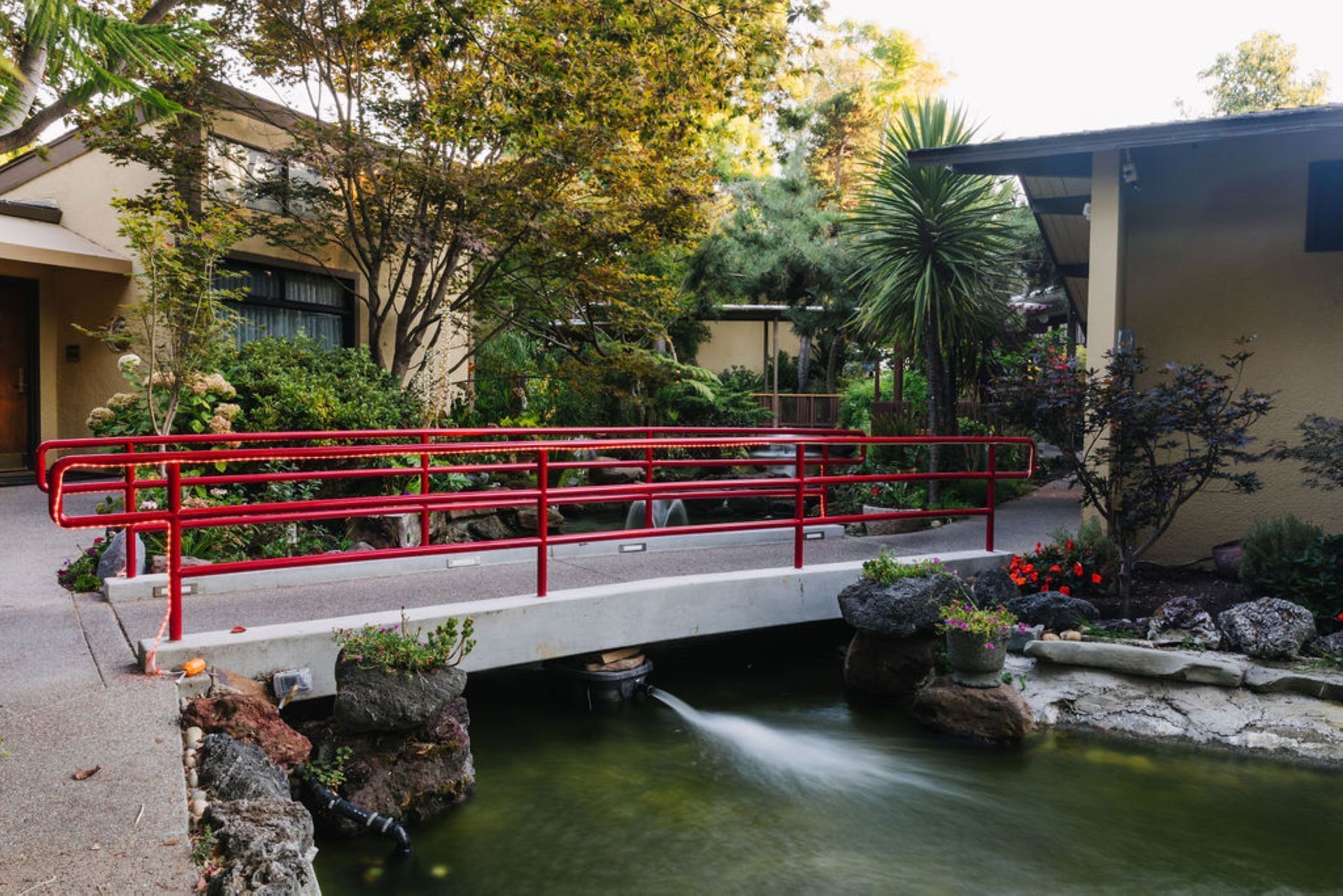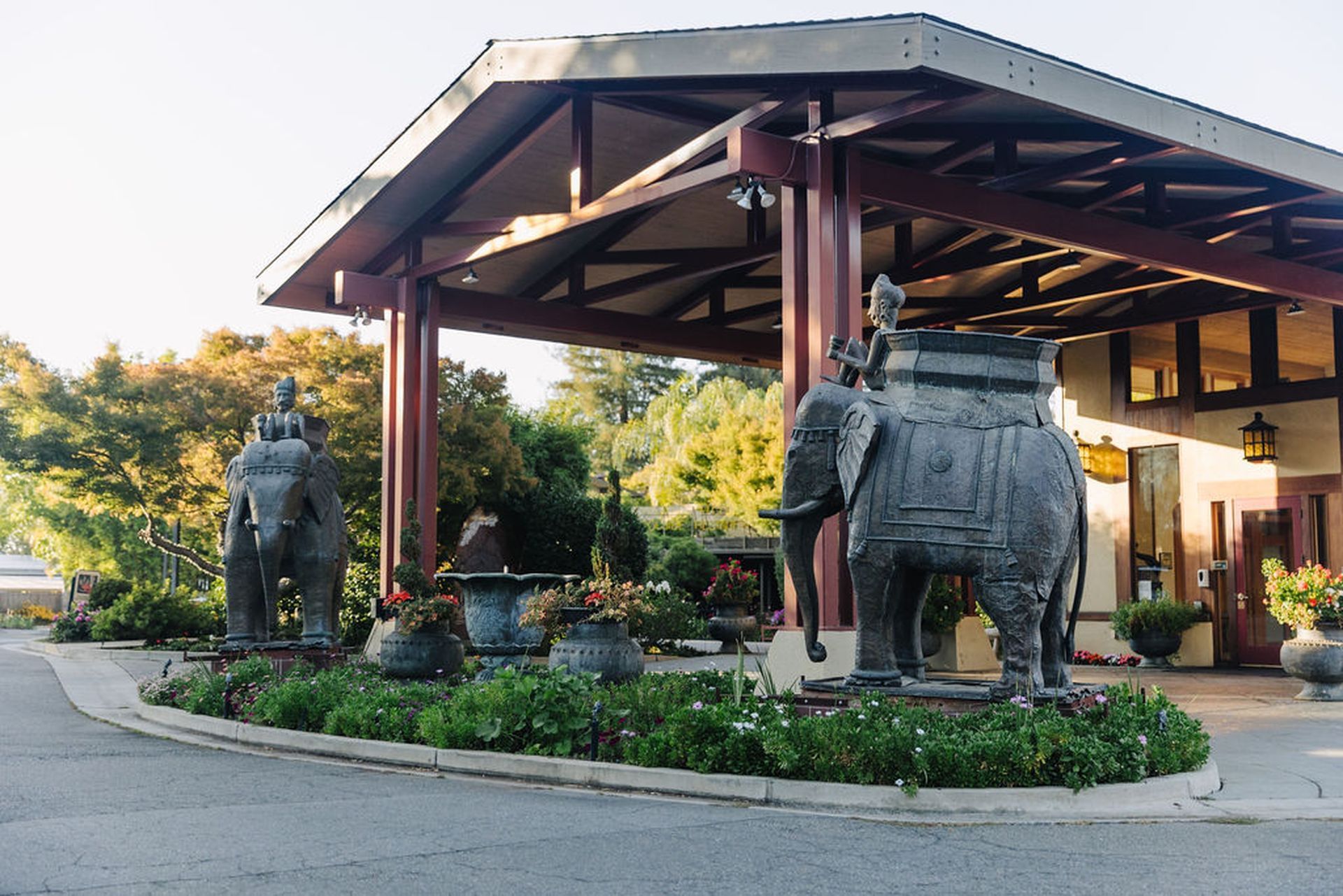From the very beginning, Raymond Handley, and his wife Milla Louise wanted the guest experience to be an artistic one. They were avid art and antique collectors and throughout Dinah's history they incorporated pieces in the gardens and rooms. From a pair of 19th century life-size Thailand processional elephants at the entrance of the hotel to a 2nd century A.D. Gandharan stone Buddha in the lagoon area, you will find genuine, unusual works of art throughout the hotel and gardens.
The Themed Suites at Dinah’s Garden Hotel were influenced by Milla and Raymond’s love for numerous cultures. For example, a visit to Raymond’s brother, the U.S. Ambassador to Mali in the 1960's, began an affinity with the people of that country which lasted for many years. In 1986, Folk Art International, the non-profit organization founded by Milla and Raymond, began implementing a water well project to provide water for several remote Dogon farming villages. Trips to Mali to review the well projects led to the purchase of African art for his galleries, Xanadu Gallery in San Francisco, and Menlo Park, which served as an inspiration for the African Suite.
Trips to Mexico to purchase Oaxacan woodcarvings for the galleries provided the inspiration for the Mexican Suite. The Railroad Baron Suite, a tribute to railroad magnate Leland Stanford who founded nearby Stanford University, features an electric train that runs on a track around the perimeter of the ceiling. Other suites invoke the feeling of being in other exotic places such as Provence, Asia, and the Southwest.
Located in the Lanai Rooms, the FDR Suite is one of our premier signature suites, featuring stained glass, framed bathroom mirrors, distinctive furniture imported from Indonesia and a spacious bathroom including a granite shower and steam room designed with wheelchair access.
In 2001, Handley and a small group of investors opened Trader Vic’s on the old Dinah’s Shack location, after Dinah’s Shack was destroyed in the 1989 earthquake. They added extensive meeting space as well as an additional dining option for the hotel’s guests. Trader Vic’s was a natural selection because it provided the perfect themed ambience for choice items from Handley’s extensive collection of Oceanic/South Pacific art. The interior of the building contained amazing works that were purchased by the Handley’s in Papua New Guinea, which included orator's stools, masks, and even canoes. There was also an original Henry Moore tapestry from Handley's own collection hanging in the Captain's Cabin which now hangs in the lobby of Dinah’s Garden Hotel.


